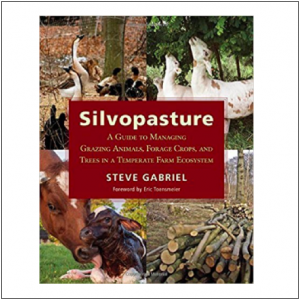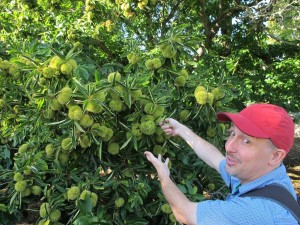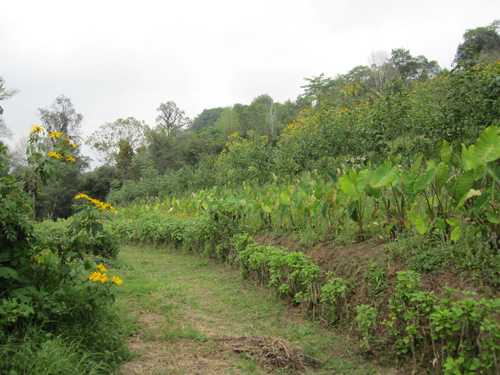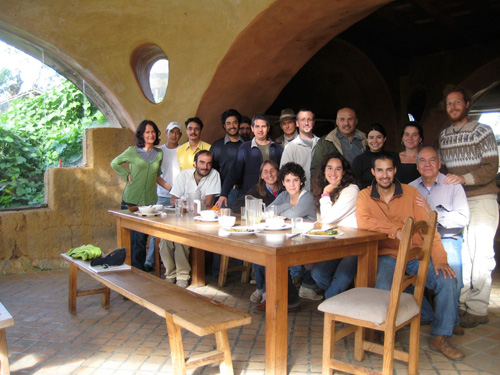What is permaculture? Here’s an excerpt from Perennial Vegetables:
Permaculture and Perennial Polycultures“Permaculture (permanent agriculture) is the conscious design and maintenance of agriculturally productive ecosystems which have the diversity and resilience of natural ecosystems. It is the harmonious integration of landscape and people providing their food, energy, shelter, and other material and non-material needs in a sustainable way.” – Permaculture: A Practical Guide for a Sustainable Future, Mollison 1990.
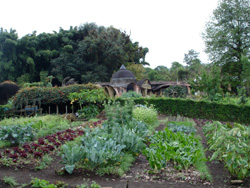
Permaculture is a design tool to help you take all the garden elements you want (i.e., greenhouse, vegetables, shed, small fruit, pond) and integrate them in such a way that they become more than the sum of their parts. Permaculture is not about any particular type of food production, although it helped to develop and popularize the notion of perennial polycultures. The simple elegance of this idea has captivated me for the last fifteen years. Whenever I am driving, walking, or riding my bike, I imagine the landscape around me converted to perennial polycultures…
Imagine polycultures of useful plants in public spaces everywhere. Vibrant ecosystems surrounding our homes and neighborhoods, producing:
- a diverse array of foods, from staple protein and carbohydrates to fruits, leaves, and roots;
- timber, bamboo, and other construction materials;
- grazing, browsing, and fodder for livestock;
- medicinal and culinary herbs;
- outdoor habitat for humans and wildlife;
- fuelwood for heat and cooking;
- fertilizers, compost feedstocks, and botanical pesticides;
- biofuels like vegetables oils to run diesel engines;
- and plant-based petroleum and plastic substitutes.
We’re not there yet. In fact, while some tropical areas have farmed this way for centuries, it is not yet certain that this vision is even possible for the frostier climes most readers of this book live in. But there is only one way to find out – to start experimenting on whatever land we have access to.
It isn’t enough to grow food sustainably – it has to be distributed equitably as well, and that’s going to take a lot more than perennial polycultures. We need political and economic systems that prioritize human beings and the environment over short-term greed and oppression. In such a scenario permaculture systems could provide the abundant basis of life in a “post-scarcity” agriculture. Perennial food systems could mean less work, less petroleum, and more free time to enjoy life – that is, after the first few decades of working the bugs out and getting those trees to grow to maturity!
Ultimately, permaculture offers a vision of how humanity can participate in, rather than damage, our planet’s ecosystems and the process of evolution itself.
In this context perennial vegetables are not just a novelty for the garden – they may just have a humble role to play in the future of our species and its relationship to the planet it calls home.
See also useful plant profiles
And our permaculture image gallery
David Holmgren’s Permaculture Principles
Co-founder of permaculture’s new user-friendly principles.
Agrodok Publications
Fantastic manuals for tropical production issues. Many downloadable free online, including some of my favorites like “Erosion Control in the Tropics,” “Water Harvesting and Soil Moisture Retention,” “Agroforestry,” and “ Urban Agriculture.”
Tree Crops: A Permanent Agriculture
A foundational manual of permaculture, addressing the key issue of it’s day (1927): erosion, through tree-based farming systems. Even more relavant to address today’s issue of climate change.
Farmers of Forty Centuries
A study of sustainable (but not regenerative) agriculture – four thousand years of farming history in China. Very interesting for the importance of humanure cycling.
Agroforestry Guides for Pacific Islands
A set of fascinating manuals for tropical agroforestry, very well done.

